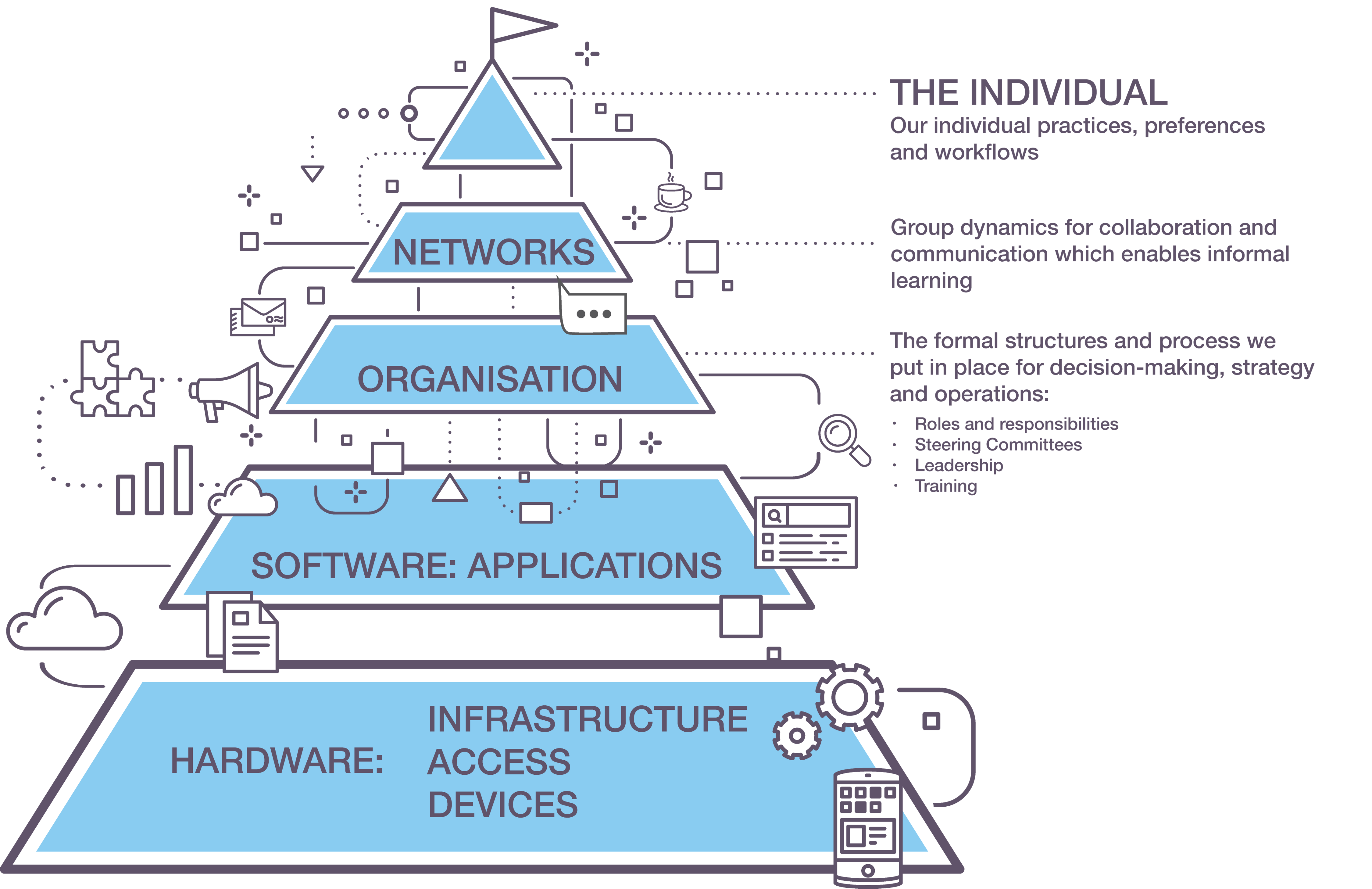Whether you’re trying to solve a technology problem or you’re about to begin a major IT project, the planning phase is critical and guess what? Your experience planning curriculum is transferable to IT planning and projects as well. In this blog post, I’ll walk through a few key steps for nailing the planning for a complex project.
Planning in Schools
Planning and curriculum are synonymous – ask any teacher what those final weeks of the summer break look like. Curriculum planning is much more than planning for the actions of one person. It’s managing collaboration, adaptation, sharing and revising shared materials, implementing new ways of doing things into practice, reflection, and continuous improvement, measuring, and assessing, and providing feedback. It’s complex and procedural while still allowing for the flexibility to meet emerging needs and respond to feedback. Curriculum planning also has ‘dependencies’ as we’d say in project management, in that it relies on curriculum frameworks, has links to assessment and impacts others like students, parents and the College. Taking this example, the planning of an IT project is much the same in that it’s much more than simply the installation of new technology – in fact; we look at IT projects as far more related to people than to hardware/software. Read on, and I’ll try to make that case for you.
Three steps for planning your next technology project
Technology in schools reflects technology in society more generally – it’s always changing, updating, and creating new possibilities and opportunities for connecting, sharing, collaborating, and communicating. Like any other industry, schools need to build in processes to make regular assessments of the best use of technology for what students and teachers need and the people they need, often for short periods, to inform and lead this process. Anyone who has had to change from PC to Mac will know that these decisions flow onto many other aspects of the organisation. This awareness must be reflected in the planning, just like in curriculum planning that considers frameworks, colleagues, students, and parents. IT project planning must consider the impact on the existing technology, the organisation, and most importantly, on people.
Even with prudent planning, we’ve seen some projects go off the rails or address only part of the problem, and we’ve been called in to assist. Here are three tips for planning your project that we’ve seen employed well or focused on really nailing a complex IT project.
Step 1 - Needs Analysis
Analysing your requirements for any major change is more than documenting a list of preferred features or gripes about how things are currently done. Yes, doing this work is critical for determining how you’ll assess your options and ensuring people feel heard, but as important is documenting how any individual change impacts your entire system. To illustrate what I mean, I’ll pause briefly to explain how we see a system (Figure 1) and why it’s useful for planning to think in terms of systems.

FIGURE 1. THE FIVE LAYERS OF A SYSTEM
An ability to use technology to empower staff, students, and parents, to innovate and engage isn’t simply a choice of one technology over another. Instead, our work's efficiency and ease when using technology depend on the effectiveness of five interdependent layers in our organisation (illustrated above). When planning a technology project, consider each layer and the following questions:
- Layer 1: Hardware. How will the speed, access and reliability of our infrastructure be affected by this change?
- Layer 2: Software. If we’re to add/remove applications, how will the schools' critical workflows and data transfer be affected? Is there truly a need to add new stuff or can we use existing stuff better with better direction and training?
- Layer 3. Organisation. Do we have the people and processes to support transparent decision-making and accountability, the strategies in place to support our people through the change and the structures to make the change sustainable?
- Layer 4. Networks. How will departments and year levels disseminate the new knowledge required in the change? Who do people go to when they have quick questions, and how can we support them as our ‘avant-garde’ of technology change?
- Layer 5. How do we go about our work as individuals? Why have people developed ‘workarounds’ to getting their work done differently to how we expect them to work? What can we learn from these workarounds and which frustrations should we prioritise as we look for solutions?
Having a thorough understanding of how we’ve built these structures around our current technologies is a window into how you can support people through change and better fit new technology pieces into an old puzzle. It also recognises that changing the tech is only stage one of many stages.
Step 2 – Stay Focused on the Problem and Measure your Impact
Deciding to undertake any significant change is the result of a problem. Something isn’t working… otherwise why go to all the trouble of upsetting the status quo? Even the most inefficient, laborious, and frustrating process will be the result of somebody’s work, and even if it isn’t always fun to do, there’s a sense of confidence that their way of doing it gets the job done. So even with the best intentions, asking people to change isn’t always going to put you on their best friend list.
As you plan your project, make sure that problem statement is front of mind and in every communication to staff. What are we trying to solve here? This can often get lost amongst the many technical wins that can be meaningless to folks who aren’t as close to the project as you.
Also, be clear about what observable changes should be evident as a result of this project, and when. Take the time to tease out realistic and practical signals that the project aims are being fulfilled.
Step 3 – Make the Benefits of Change Personal
Finally, describe the benefits of the project in personal terms. “What do I stand to gain from going through this short-term pain?” Whether it’s more time in your day or less administrivia, understanding how we’ll all personally benefit will improve enthusiasm for participation and will help you demonstrate that you’re winning.
To illustrate how you might do this and to unpack this notion of a ‘workflow’, let’s consider the practice of reporting academic progress and use the ‘Five Layers of a System’ figure to help illustrate.
- Hardware: we may go about improving remote access, or new devices may impact how we collect and share reporting information.
- Software: the applications we use and support in collecting assessment information, and how simple and well suited they are to share that information with students and parents. The seamlessness of passing that information from one application to another is also critical – solving the need to enter and re-enter this information for student feedback, parent reporting, and semester-based reporting will dramatically impact individual people.
- Organisation: improving transparency and advocacy in the decisions around the applications, processes and standards used for reporting will impact people, as will a deliberate and individualised approach to professional learning in support of these choices.
- Networks: ensuring knowledge is well-dispersed, and expectations of usage in practice are clear will create better consistency in adopting change; we will always turn to trusted colleagues first when we have a quick question.
Examining system efficiency by workflows, particularly those as critical as reporting, allow us to build up the macro picture by seeing clearly its many micro parts. It’s like many puzzle pieces, each featuring a picture of a person’s face that combine to form a new picture when assembled. Understanding the many layers of a system gives us the tools to diagnose how to address a big problem by solving the most common problems experienced by individuals.
If you’re a Business Manager considering a major project, an IT Manager wanting to tackle a complex technology problem or a Principal or Learning Leader interested in analytics and data for measuring achievement, growth, and impact, give RTG (Reflex Technology Group) a call and we will help you adapt to deliver successful, consistent IT outcomes from change.
(p) 1300 362 456

















